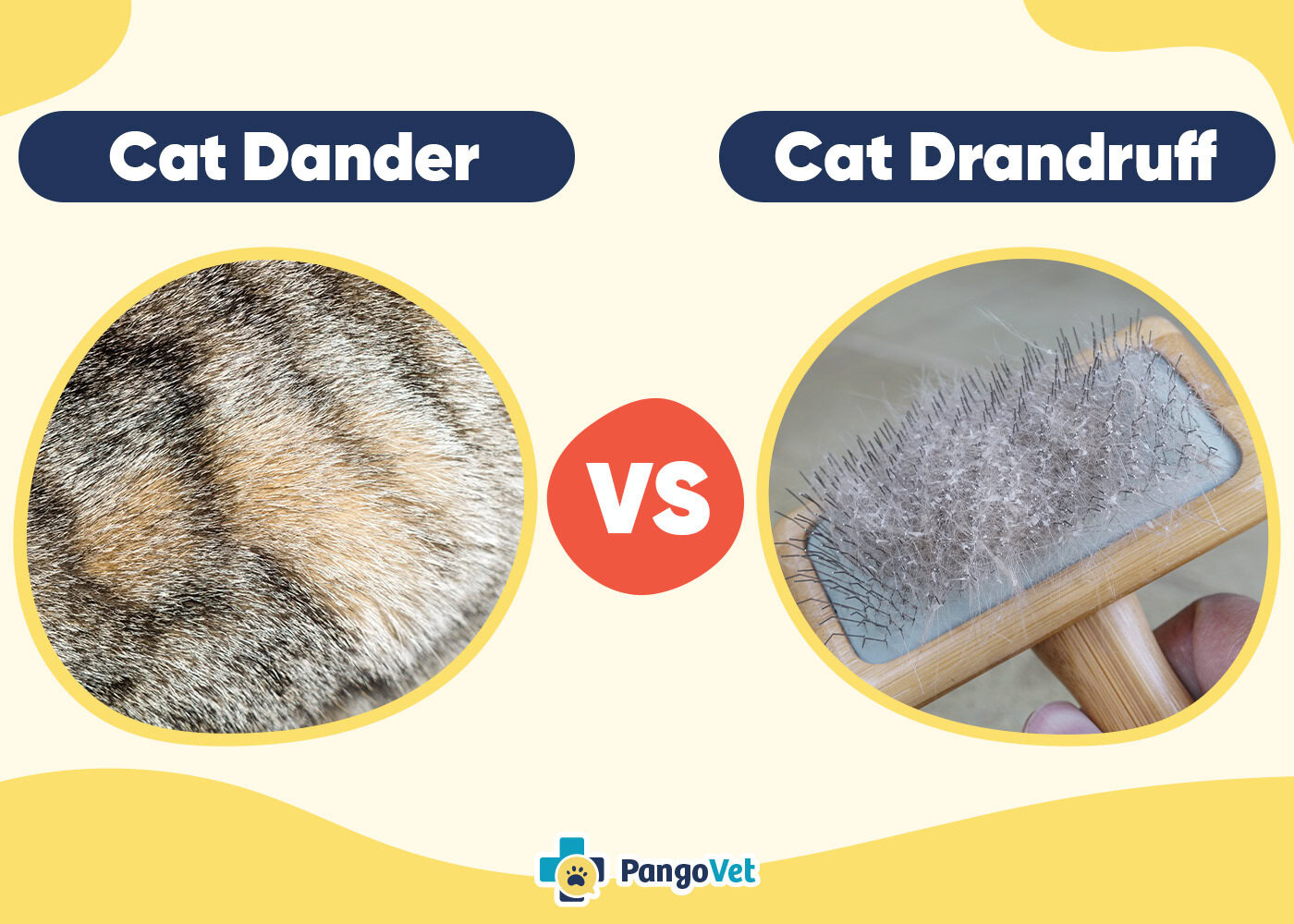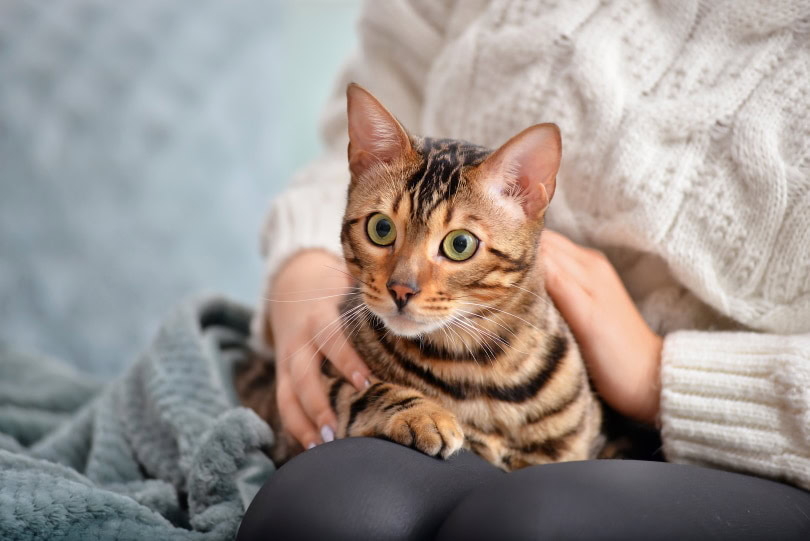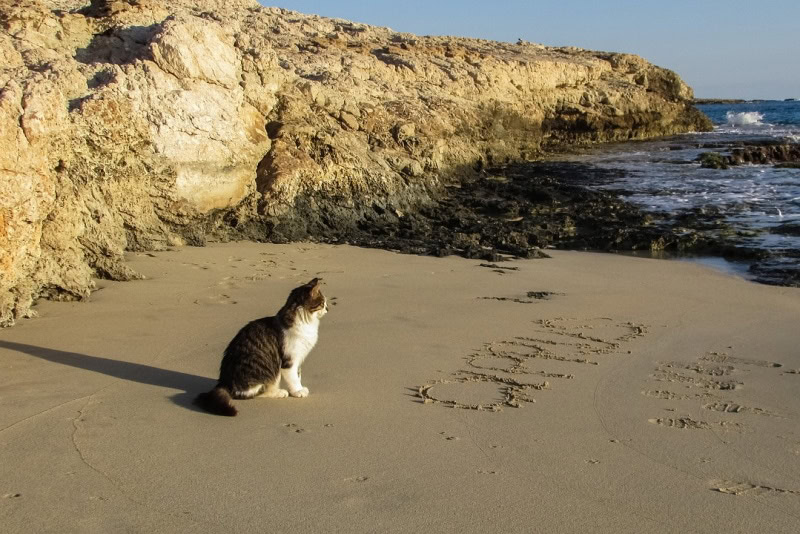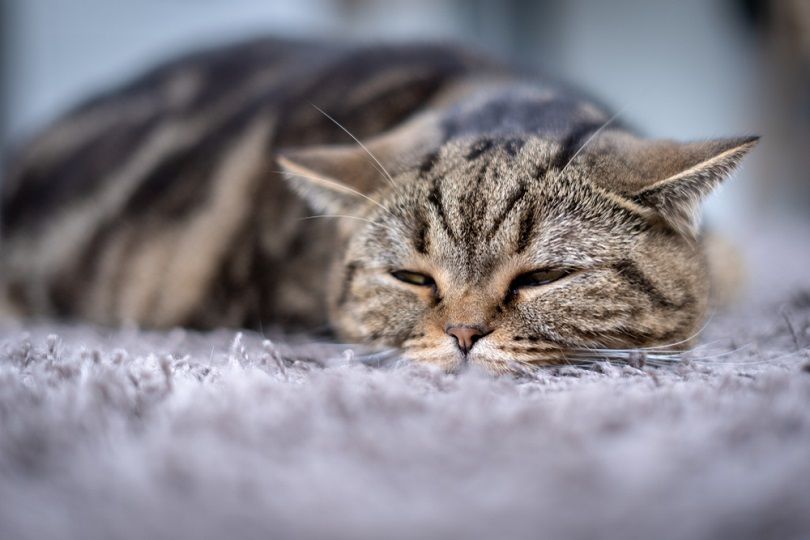VET APPROVED

The information is current and up-to-date in accordance with the latest veterinarian research.
Learn more »Click to Skip Ahead
Cat dander and dandruff are often confused, but they’re not the same thing. Both are made up of dead skin cells and can play a role in triggering allergies in humans—but they have important differences. All cats produce dander as part of normal skin renewal, while dandruff usually appears when the skin isn’t functioning properly.
Understanding the differences between the two is key to recognizing when your cat’s skin health needs attention. In this article, we’ll break down the main differences between dander and dandruff, explore what causes dandruff in cats, and share tips on how to treat and prevent it.

Overview of Dander
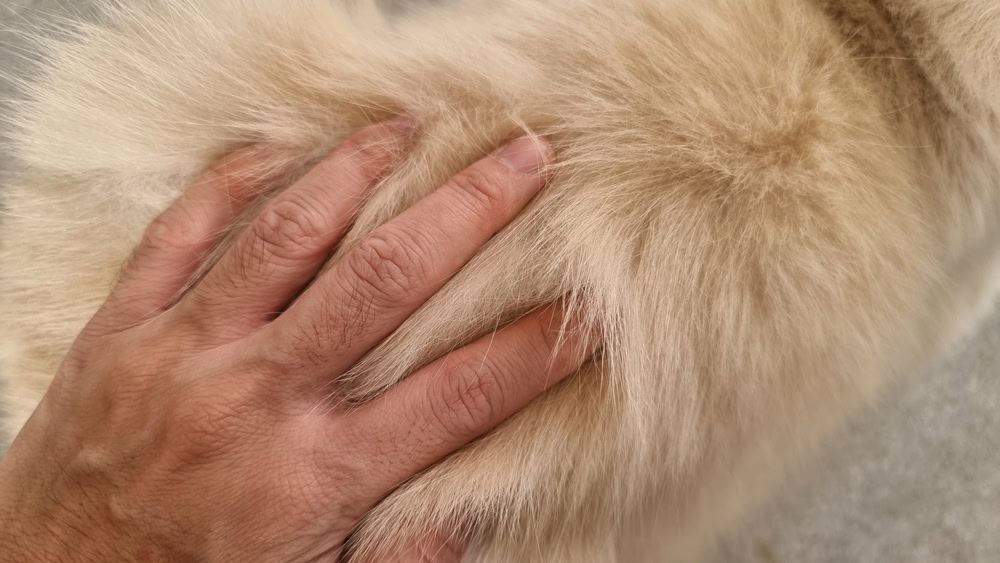
What Is Dander?
Dander are tiny (microscopic) skin cells that are shed by animals with fur or feathers. Dander is constantly shed by all mammals and birds, and it flakes off the skin in pieces too small to see with the human eye. The skin comprises several layers of cells, with new cells produced underneath. The cells on the outer layer of the skin die off and are shed as dander, and the next layer down replaces them. This keeps your cat’s skin healthy and clean.
In cats, dander is often, but not only, caught in the fur. Dander is very light and sticky, and it may linger in the air for long periods. It also sticks to fabrics, furniture, bedding, and can be carried on items into and out of the home. Dander is the most common source of pet allergies.
Do All Cats Have Dander?
Yes, all cats have dander. It is a natural consequence of normal skin regeneration in animals.
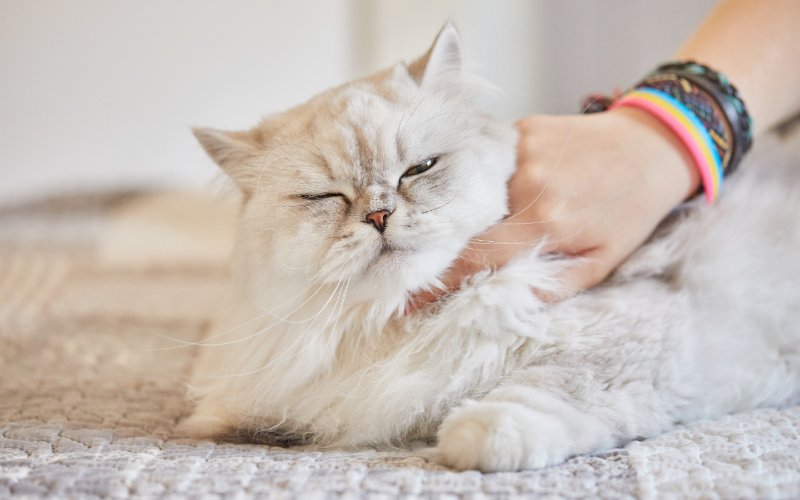
Dander and Allergies
You often hear dander talked about in relation to allergies. Cat allergies are a reaction to certain proteins that cats produce, called allergens, Fel d1 being the main one. This protein comes from cat saliva and sebaceous glands on the skin, and it’s carried around on cat dander and hair. Protein production varies from cat to cat. Additionally, female cats produce less than males, and castrated males produce less than non-castrated males.
As your cat grooms, the protein is deposited on the fur and skin. As your cat sheds dander, bits of the protein are also shed. This is a big problem for people with cat allergies. Because the amount of protein in a speck of dander is so tiny, many people with mild allergies won’t react to a little bit of dander. But if you’ve ever walked into a room and started having a reaction even though you haven’t had direct contact with a cat, dander is probably to blame. These microscopic bits of protein-covered skin are causing a reaction, and since they can float through the air, you might never even see the cat.

Overview of Dandruff
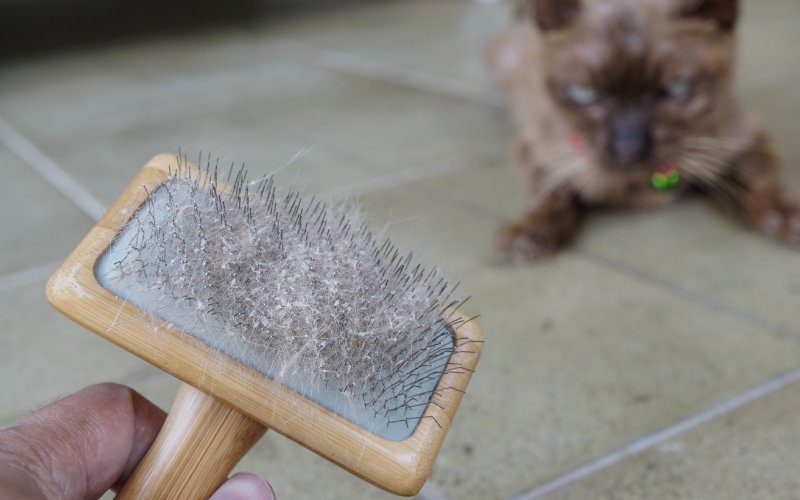
What Is Dandruff?
Dandruff, called scaling in medical terms, is also made of dead skin cells, but it’s different from dander. Instead of flaking off in microscopic pieces, dandruff comes off in larger chunks. These pieces can be anywhere from the size of grains of sand to about an eighth of an inch long, and they often resemble white fish flakes. Dandruff usually gets caught in your cat’s hair, and it can also get shed wherever your cat walks or sits. Unlike dander, dandruff is abnormal in cats and should be treated if it shows up.
What Causes Dandruff?
Dandruff is caused when the skin is too dry or oily to shed correctly and instead comes off in larger clumps or flakes. There are several causes of dandruff, but the three leading causes in cats are poor grooming, chronic skin inflammation, and parasites.
Dandruff is common in elderly or overweight cats who can’t groom themselves properly. In areas where your cat struggles to groom, the oils in the skin cannot be distributed. This can lead to dandruff as the skin begins to flake and clump.
Another common cause of dandruff is allergies. Cats with flea bite allergy or atopic dermatitis suffer from chronic itching and skin irritation, which can manifest with flaking skin no matter how well they groom.
Cats can also get dandruff because of a health problem, such as a parasite or fungal infection. They can irritate and kill off the skin, leading to dandruff. They can also lead to other health problems.
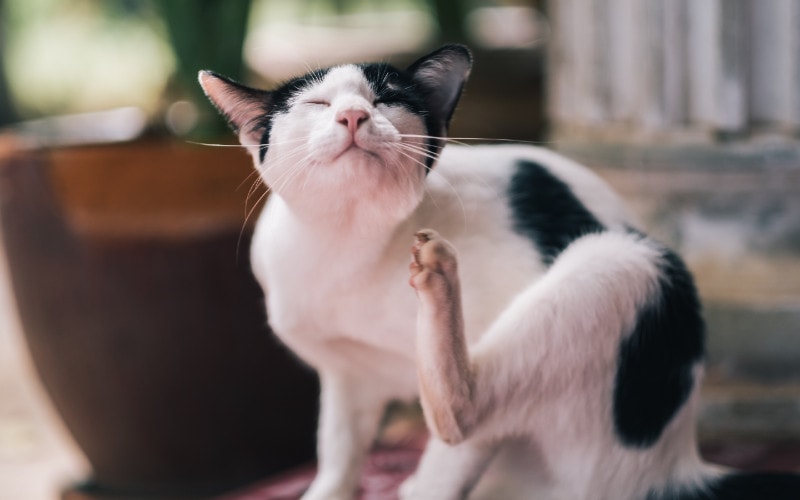
Dandruff and Allergies
As dandruff comes from the skin, it may also contain cat allergens and trigger allergic reactions. However, dandruff is heavier and doesn’t float through the air like dander, so it spreads in the environment differently. Despite that, dandruff can also be a serious problem for allergy sufferers, giving us one more reason to treat it.
Treating Dandruff
If your cat has dandruff, you’ll want to understand how to treat it and how to help your cat’s skin recover. This means finding the underlying cause of dandruff. Regular grooming is an excellent way to start because most dandruff is caused by poor grooming. You can also groom your cat to help you check for fleas or signs of infection. Any sign of fleas or parasites requires treatment to help your cat get rid of the underlying problem before the dandruff gets worse.
If grooming alone doesn’t work, it’s time to consult your vet. Depending on what has triggered your cat’s scaling, your vet may suggest options such as parasite control, feeding your cat a sensitive skin diet, omega fatty acids supplementation, or medicated shampoos.


Comparison
- Microscopic skin cells
- Normal and healthy
- Not preventable
- Triggers allergic reactions
- Larger flakes of dead skin
- Abnormal
- Can be treated
- Can trigger allergic reactions
It's easy to get overwhelmed when you're looking for the perfect pet shampoo. The Hepper Pet Shampoo products are a great place to start because of their all-natural, pet-safe formula that is pH balanced for your pet's skin. Made with soothing ingredients like oatmeal and aloe vera, these shampoos are also free of phthalates, sulfates, dyes, and soaps. Both options will leave your pet clean, moisturized, and smelling like a day at the spa!
Here’s a quick guide to help you choose the right option for your pet’s next bath!
| Image | Product | Details | |
|---|---|---|---|
For Bathing
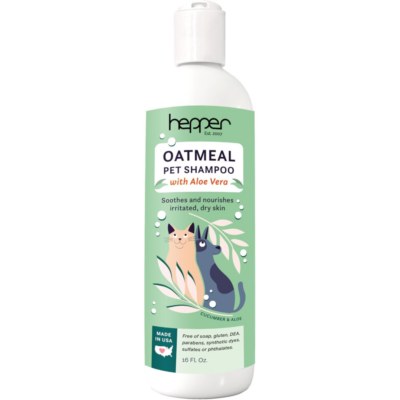 |
Hepper Oatmeal Pet Shampoo |
|
Check Price |
For In-Between Baths
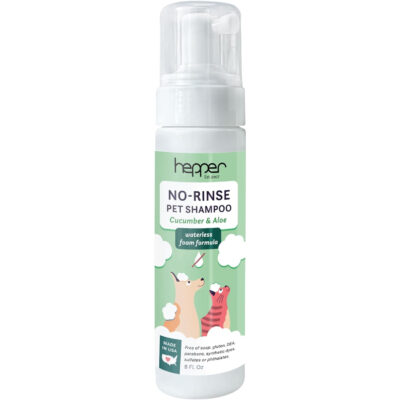 |
Hepper No-Rinse Pet Shampoo |
|
Check Price |
At PangoVet, we've admired Hepper for many years, and decided to take a controlling ownership interest so that we could benefit from the outstanding designs of this cool cat company!

Conclusion
If you see skin flakes in your cat’s fur, it’s probably dandruff. Unlike dander, which all cats produce, dandruff is visible and a sign that your cat has poor skin health. Although there are various underlying causes, most cases of dandruff are relieved by a combination of grooming and diet changes.
Featured Image Credit: Top – Dander (RJ22, Shutterstock) | Bottom – Dandruff (Nau Nau, Shutterstock)
